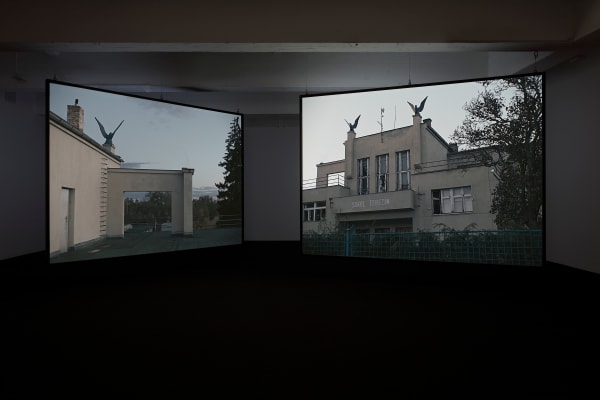-
-
-
-
-
Born in 1965 in Glasgow, Philipsz currently lives and works in Berlin. She received a BFA in Sculpture from Duncan of Jordanstone College in Dundee, Scotland in 1993, and an MFA from the University of Ulster in Belfast in 1994. In 2000, she completed a fellowship at MoMA PS1 in New York. She received the Turner Prize in 2010 and was awarded an OBE in 2014 for services to British art.
Philipsz has presented solo exhibitions at Kunstmuseum Bonn (2021), Castello di Rivoli in Italy (2019), Tate Modern (2018) and Tate Britain (2015) in London, Bonniers Konsthall in Stockholm (2017), Kunsthaus Bregenz in Austria (2016), Hamburger Bahnhof in Berlin (2014), the Carnegie Museum of Art in Pittsburgh (2013), K21 Standehaus Kunstsammlung Nordrhein-Westfalen in Dusseldorf, Germany (2013), Museum of Contemporary Art in Chicago (2011), Aspen Art Museum in Colorado (2010-11), Wexner Center for the Arts at Ohio State in Columbus, OH (2009-10), Museum Ludwig in Cologne, Germany (2009), Institute of Contemporary Art in London (2008), among others. Installations by Philipsz were included in Skulptur Projekte Muenster in 2007, the 55th Carnegie International in 2008 and the National Gallery of Victoria Triennial in 2020.
The artist’s major commissions include Lowlands, her Turner Prize-winning work for Glasgow International in 2010, SURROUND ME: A Song Cycle for the City of London, a public project organized by Artangel in London (2010-11); Study for Strings for dOCUMENTA 13 (2012), subsequently shown at MoMA in New York (2013) and performed live by the St. Louis Symphony at the Pulitzer Art Foundation (2020); Day is Done, a permanent installation organized by the Trust for Governors Island in New York (2014); New Canaan, a project for the Grace Farms Foundation (2015); Prelude in the Form of a Passacaglia at the Walt Disney Concert Hall in Los Angeles (2020), Rosa at KW in Berlin (2021), The Wind Rose at Boca Raton Museum of Art in Florida (2021).
Philipsz’s work can be found in the collections of the Baltimore Museum of Art, Beyeler Foundation in Basel, Hamburger Kunsthalle in Hamburg, Carnegie Museum of Art in Pittsburgh, Castello di Rivoli in Italy, Solomon R. Guggenheim Museum in New York, Hirshhorn Museum and Sculpture Garden in Washington, DC, Museo Nacional Centro de Arte Reina Sofia in Madrid, Museum of Contemporary Art, Chicago, Museum Ludwig, Cologne, Germany, SFMOMA in San Francisco, The Tate in London, the Walker Art Center in Minneapolis, and the Brooklyn Museum in New York.
The project Study for Strings Sokol Terezín was made possible through a grant awarded by Stiftung Kunstfonds.




